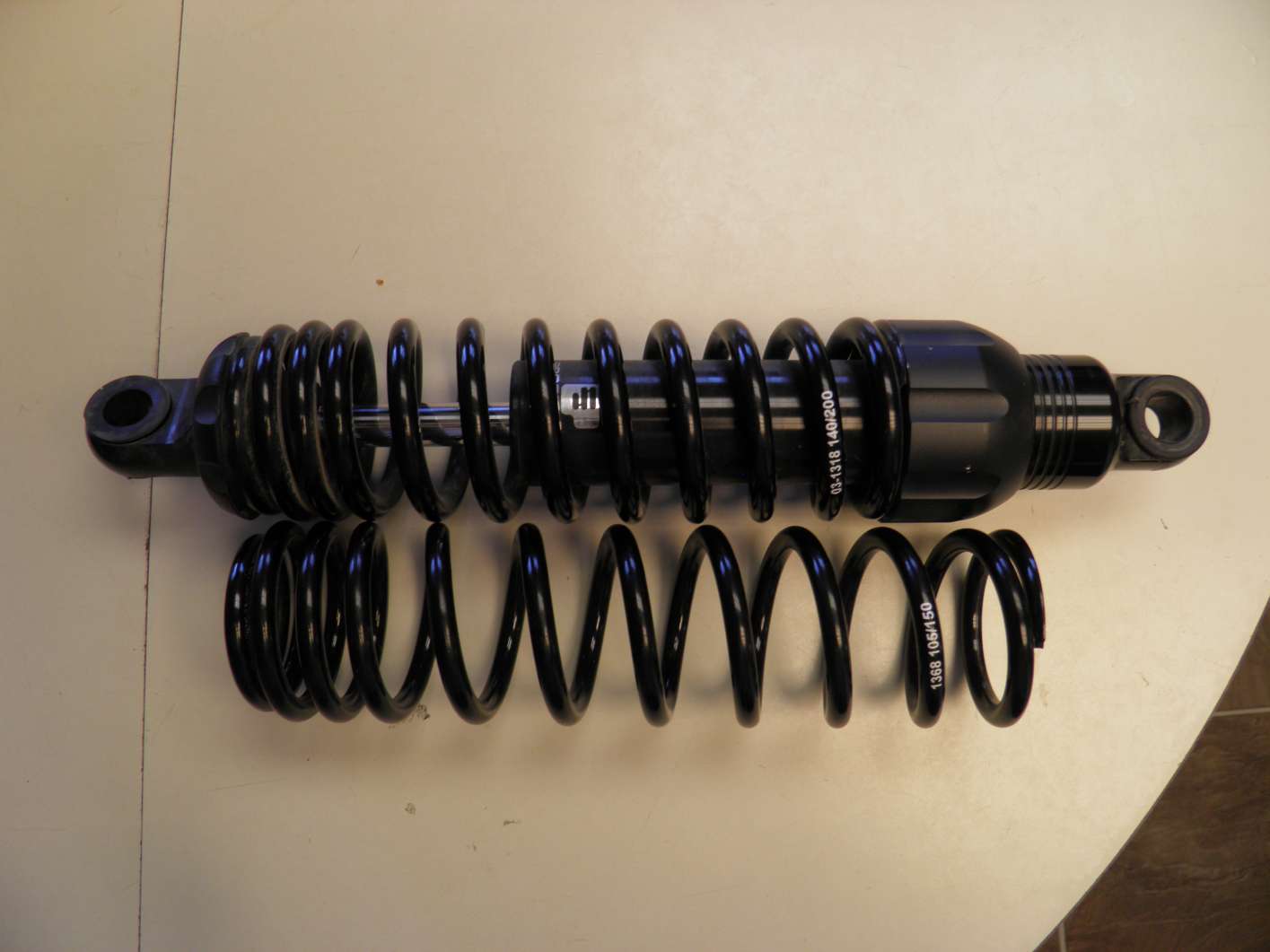That's a lot of reading that I haven't time for right now, but I'll describe my current understanding. A progressively wound spring typically is composed of two different sections, with one section having more coils per unit of length than the other section. A single rate spring rated at 200 will require a 200 lb. force to compress it the first inch, 400 lbs. to compress it two inches, 600 lbs. to compress it three inches, etc. A compressively wound spring will require more additional force to compress it by one inch when it is nearer fully compressed than when it is just beginning to be compressed. The 140/200 designation might mean one of two things; I would need to do the research to find out which it is. It might mean that the effective spring rate is 140 lbs. per inch when you begin to apply force, and becomes 200 lbs. per inch when the spring is almost completely compressed, or it might mean that the more tightly-spaced section has a rate of 140 lbs. per inch, and the more widely-spaced section has a rate of 200 lbs. per inch. I suspect it's the former.
Changing the preload has no effect on spring rate. If you were to have several mounting holes on the bike's frame for the upper end of the shock, with the row of holes in line with the shock, moving the upper shock eye to a lower hole has the same effect as increasing the preload of the shock. You raise the bike higher for a given load.
The reason why the same spring on two different shocks, one with lighter damping, will have the bike with the lighter-dampened shock more likely to bottom out, is that the lighter shock has less resistance a rapid change in the shock's length. If you were to test the two shocks with the springs removed, it will require less force to compress the lighter shock at a given rate (distance per unit of time) than the heavier one. E.g. if you fully extended the shocks, then applied a force to the end of each, the lighter shock would require less force to fully collapse the shock in two seconds than the heavier one would. If the same force were applied to each, the lighter one would collapse faster.
To answer your question, "BTW, does running 140/200 springs at 3/4 preload mean I am running them at 185 preload?", one would have to know what the spring length fully extended and fully compressed is, by how much each preload position shortens the spring, what length is the spring when the bike is loaded, and what the mathematical function is to provide the spring rate at any compression length between 140 (uncompressed) & 200 (fully compressed).
Wouldn't distilled cat's pee simply be distilled water, and thus odourless?
I agree with your comments (pretty astute BTW, IMHO) with some caveats or at least comments.
These are indeed progressive wound springs, it's not just their name. When you apply preload, the first part to compress is the closer-wound segment. Note in this pic, the 140/200 spring is on the shock with full preload - 8 turns on a symmetric thread. Note they are nearly touching. The other spring is the lighter 105/150. The springs are the same length when off the shock. As you can see, after full preload is applied, most of the remaining tension of the spring is linear. I am assuming the full range of 2.69" travel is still available on this shock, even with full preload applied. So who knows what their designations mean, or if they aren't the same once preload is involved. I think I need to do the measurements with graphing I mentioned above. I don't think the spring rates mean "per inch". Unless someone can point to that designation by Progressive.

Right, changing the preload doesn't affect rate - except when preloading past the closer-wound segment of the spring. What preload does, is affect at what weight the spring starts to work. Put on 200# of preload, and the spring starts working with 200# more weight on it, but at that point an increment of weight will depress it the same distance as without the preload. Again, disregarding the "progressive" part of the spring. This affects the height of the suspension at a given weight. This was explained in a green paragraph above.
Your next paragraph is what Jorge was explaining. However the site I quoted above did suggest you can change the springs only and still get some benefit. Not the least of which is significant savings. Which is what I did, and I think I discovered less than optimum behavior.
I'm going to dig into this with lab measurements. But probably not immediately. I have to get pipes going and have a big ride coming up.
Oh on the distilled cat's pee. Not sure on that yielding water. After all, most liquors are distilled and they aren't water. Thank goodness. I'm gonna mix up a salty dog in a couple minutes.

